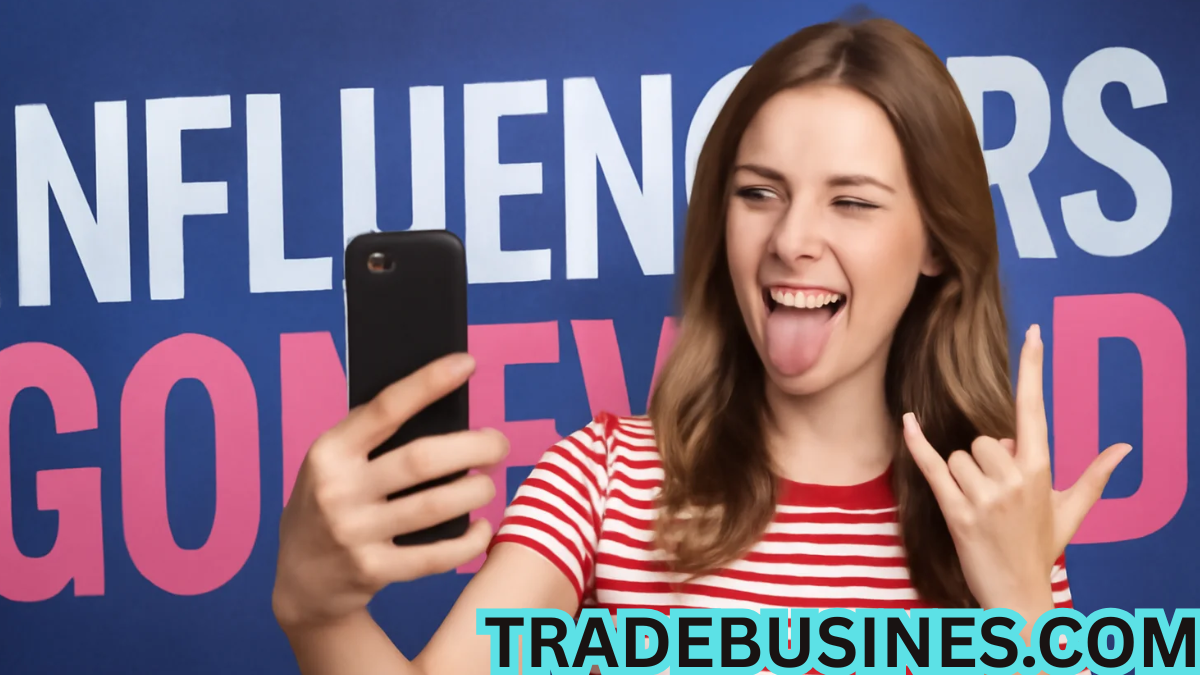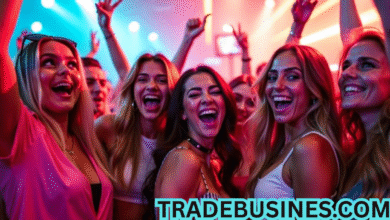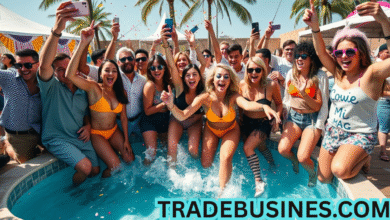Understanding the Influencer Culture
Influencers Goneeild The rise of the digital age introduced a new form of celebrity: the influencer. Rooted in platforms like Instagram, TikTok, YouTube, and Twitter, these social media personalities shape consumer behavior, set cultural trends, and command massive online audiences. While many influencers use their platforms for positivity, education, and creativity, there has been a notable shift marked by a phenomenon often described by observers as “influencers goneeild.”
This coined term appears to represent a distorted version of “gone wild” or “gone rogue” and is a colloquial way of highlighting how some influencers stray from acceptable conduct, ethics, or public expectations. This trend is increasingly concerning to audiences, brands, and even regulators, raising questions about accountability, authenticity, and the impact of online fame.
The Psychology Behind Fame on the Internet
At the heart of the influencer phenomenon lies the human psyche’s response to validation. Platforms are designed to reward popularity through likes, comments, shares, and follower counts. This creates a dopamine loop where influencers continuously seek Influencers Goneeild engagement to maintain relevance.
As fame grows, so do the pressures. Influencers are often expected to constantly generate content, remain politically correct, be trendsetters, and uphold an ideal lifestyle. This immense burden may push some toward erratic or controversial behavior as a means of staying in the spotlight. Thus, the descent of an influencer from admired to infamous may begin subtly and grow rapidly.
When Content Turns Controversial
One significant trait of the “influencers goneeild” phenomenon is the tendency to chase virality through polarizing or inappropriate content. Some influencers begin experimenting with offensive jokes, shocking stunts, or fabricated drama in order to capture views and engagement. In the digital attention economy, controversy often translates into clicks, and for some, this becomes a viable—albeit risky—strategy.
However, these actions come at a cost. Many influencers who veer too far from societal norms face backlash, get de-platformed, or are dropped by sponsors. Yet, even after facing public criticism, some persist, developing a niche among viewers who support rebellious or “uncancelable” content creators. This creates a cycle where shock value is perpetuated and normalized.
The Role of Algorithms in Amplifying Extremes
Social media algorithms are designed to prioritize engagement. Content that gets more comments, shares, or time-on-screen is more likely to be promoted to a wider audience. Unfortunately, this sometimes rewards extreme or divisive content because it elicits strong reactions—both positive and negative.
In this sense, the platforms themselves can contribute to influencers going “eild” by inadvertently encouraging sensationalism. As creators try to game the algorithm, they may compromise ethical standards in favor of gaining reach. The feedback loop becomes dangerous when creators learn that the more outrageous the post, the higher the engagement.
Brand Deals and the Price of Association
As influencer marketing becomes mainstream, brands carefully select personalities who align with their image. However, when an influencer engages in inappropriate behavior, it can damage not only their reputation but also the brand they represent. In recent years, multiple major companies have severed ties with influencers who sparked controversy, from insensitive comments to illegal activity.
Despite this, some brands continue working with controversial figures due to the visibility they offer. In this case, profit often outweighs principles. This ambiguity in corporate responsibility adds another layer of complexity to the influencer economy, where morality and monetization often conflict.
Public Fascination with Downfalls
One reason the “influencers goneeild” narrative gains traction is the public’s interest in scandal. The rise and fall of public figures have long intrigued audiences, and in the era of social media, these stories unfold in real time. Followers become invested in the lives of influencers, and their mistakes or controversies become viral events discussed across digital platforms.
The line between entertainment and reality blurs, and audiences sometimes forget that behind the screens are real individuals navigating complex lives. Nonetheless, the public rarely looks away when drama strikes, contributing to the cycle of downfall and comeback that defines many influencers’ journeys.
From Cancel Culture to Redemption Arcs
Cancel culture has become a defining feature of internet discourse. When influencers cross the line—whether through offensive behavior, criminal conduct, or ethical lapses—they often face mass unfollowing, public outrage, and professional setbacks. While some disappear entirely, others reemerge, having learned from their mistakes or having leveraged the controversy to reinvent themselves.
These redemption arcs vary in authenticity. Some influencers issue public apologies, rebrand, or even switch platforms. Others double down on their controversial persona, cultivating an audience that resents “cancel culture” and supports so-called “uncensored” expression. In both cases, the influencer continues to operate within the digital ecosystem, albeit with a transformed identity.
Influence Without Boundaries
One of the dangers of influencer culture is the lack of formal oversight. Unlike traditional celebrities bound by contracts, publicists, and media gatekeepers, influencers often operate independently. With minimal regulation, they can post content immediately to millions of followers without review or legal input.
This autonomy is both empowering and risky. While it allows for genuine self-expression, it also opens the door for impulsive actions, misinformation, and irresponsible behavior. The “goneeild” trajectory is often accelerated by this freedom, where an influencer acts on impulse and then deals with the consequences later—or not at all.
The Impact on Followers and Youth
Younger audiences often view influencers as role models. When these personalities display reckless, harmful, or immoral behavior, it can have a damaging effect on impressionable viewers. The glamorization of bad decisions, risky pranks, or hyper-materialism sets unrealistic and unhealthy standards.
Influencers gone rogue may also unintentionally normalize problematic behavior. From glorifying substance abuse to spreading conspiracy theories, these figures sometimes act irresponsibly with little regard for the societal consequences of their content. This influence can shape opinions, behavior, and even life choices among their followers.
The Ethics of Audience Responsibility
While influencers are accountable for their actions, audiences play a role in enabling their rise and fall. Following, sharing, and commenting—even with criticism—often boost an influencer’s reach. In this way, the public contributes to the visibility and success of controversial figures.
This raises questions about collective ethics. Should viewers disengage from influencers who behave irresponsibly? Should platforms provide tools to filter or suppress harmful content? The answers are not simple, but they suggest that digital responsibility must be shared between creators, platforms, and consumers alike.
Platform Accountability and Future Policies
Major social media platforms have begun to take more responsibility in moderating content. Influencers who engage in hate speech, harassment, or other violations may face content removal, demonetization, or bans. However, enforcement is inconsistent and often comes after public pressure.
In the future, more robust policies may be needed to ensure that influencers adhere to certain standards—especially those with massive youth audiences. Transparency in sponsorships, verification of credentials, and clearer community guidelines could help reduce the prevalence of harmful influencer behavior.
A Glimpse Into the Future of Influence
As the influencer industry matures, it is likely to undergo significant evolution. Creators may begin to professionalize, adopting teams, management, and ethical frameworks. Meanwhile, audiences are becoming more critical and discerning, pushing influencers toward greater transparency and authenticity.
At the same time, alternative platforms that prioritize uncensored content may grow in popularity, providing safe havens for those labeled “goneeild” by mainstream standards. The tension between freedom of expression and social responsibility will continue to define the influencer landscape.
Reflecting on the Term “Influencers Goneeild”
The phrase “influencers goneeild” symbolizes a broader cultural commentary on the extremes of digital fame. It encapsulates both the allure and danger of internet stardom, where success is often volatile and public opinion can swing overnight. It also reflects the shifting standards of acceptable behavior and the growing scrutiny faced by public figures.
This term, even if informally coined or misspelled, reflects real concerns about how fame, power, and influence intersect online. As more people seek to become influencers, understanding these dynamics becomes increasingly important—not just for creators but for society at large.
FAQs
What does “influencers goneeild” mean?
The term likely stems from a misinterpretation or alteration of “influencers gone wild” or “influencers gone rogue,” referring to online personalities who deviate from professional, ethical, or socially acceptable behavior.
Why do influencers behave irresponsibly online?
The pressure to stay relevant and generate engagement can lead some influencers to push boundaries, post controversial content, or act out for attention.
Are platforms doing enough to regulate influencer behavior?
While platforms have community guidelines and enforcement tools, many argue that moderation is inconsistent and often reactive rather than proactive.
How does audience behavior influence influencers?
Audience engagement—whether positive or negative—can amplify an influencer’s reach. This often incentivizes shocking or polarizing content.
Can influencers recover after going “goneeild”?
Some influencers manage to rebrand, Influencers Goneeild, or shift their content focus to regain public support. Others capitalize on controversy to cultivate a niche audience.
What responsibility do brands have when working with influencers?
Brands are increasingly aware of the reputational risks involved in influencer marketing and are more selective about partnerships. However, inconsistencies remain across industries.



